February Edition: A Visit to Brontë Country
Postcards from Haworth. The design interview: Corin Mellor and fresh stock updates
Hello and welcome to the February newsletter. For this month’s edition I travelled north to Brontë Country and the Yorkshire village of Haworth. And from Sloane Square to Sheffield to talk cutlery and craft in an exclusive interview with designer Corin Mellor.
Haworth, the picturesque Yorkshire village famous for its literary family, is surrounded by far-reaching Pennine moorland: wild, windswept and scattered with bracken and heather. This powerful setting was a huge inspiration for the Brontës and their famous novels including Wuthering Heights, The Tenant of Wildfell Hall and Jane Eyre.
I arrived in Haworth at the tail end of a storm with dank, January drizzle providing an atmospheric backdrop to the cobble stones and charming York stone cottages on the main high street.
The walk past the station up Main Street, to the Parsonage and the Brontë family home, is familiar. I grew up in Yorkshire and primary school trips were either to Haworth or York.
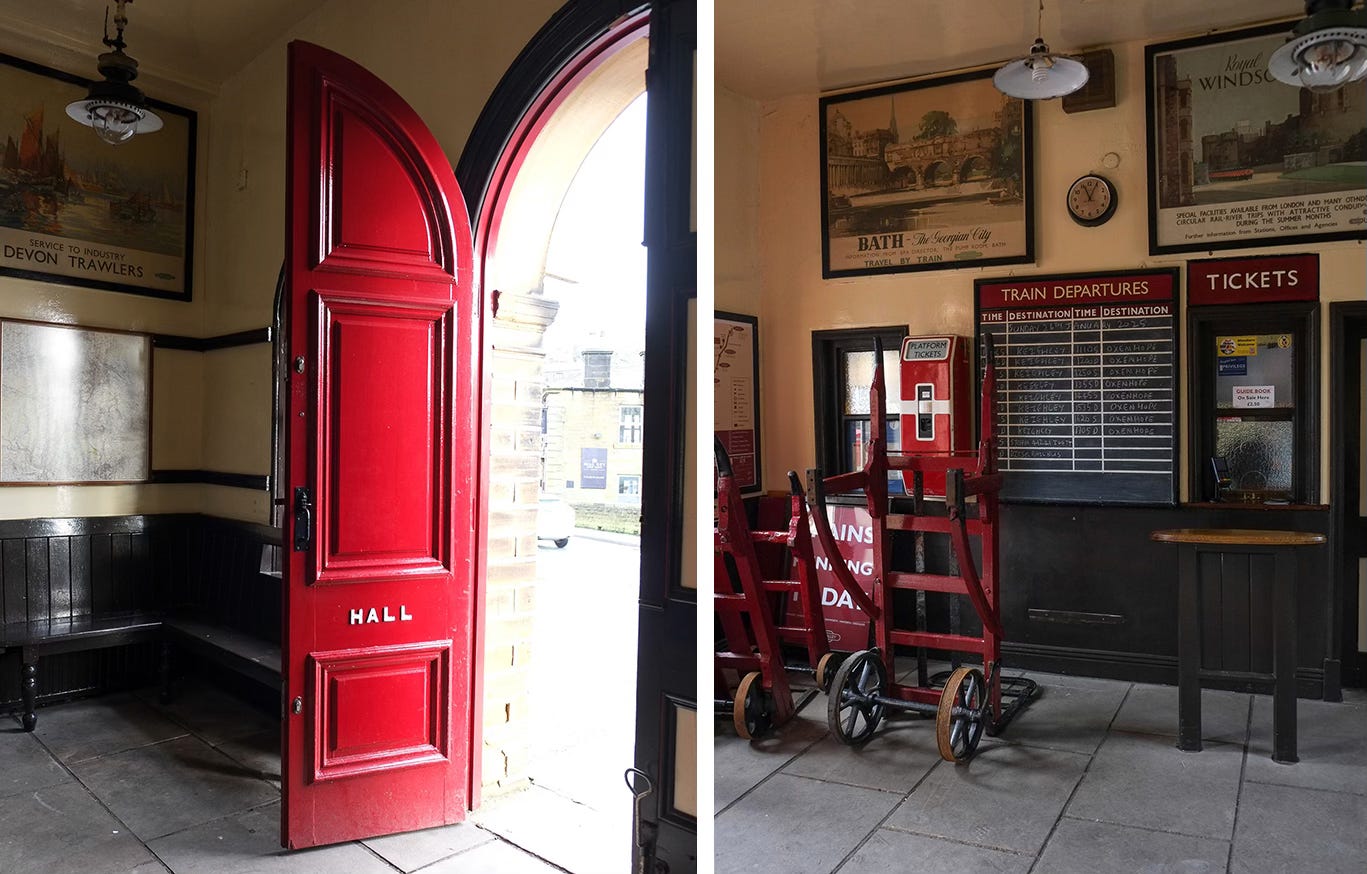
But it was Haworth that captured my 9 year-old heart after seeing a display of tiny books made by the young Charlotte, Emily, Ann and brother Bramwell in which they created imaginary worlds. The Parsonage, now a museum, was the Brontë children’s home where they lived with their father, curate of the local church. The museum captures the family’s everyday life in the early-to-mid 19th century with a permanent exhibition of Brontë artefacts including letters, writing desks, clothing, manuscripts and furniture. The latest exhibition From Haworth to Eternity: The Enduring Legacy of the Brontës runs until 1 January 2026.
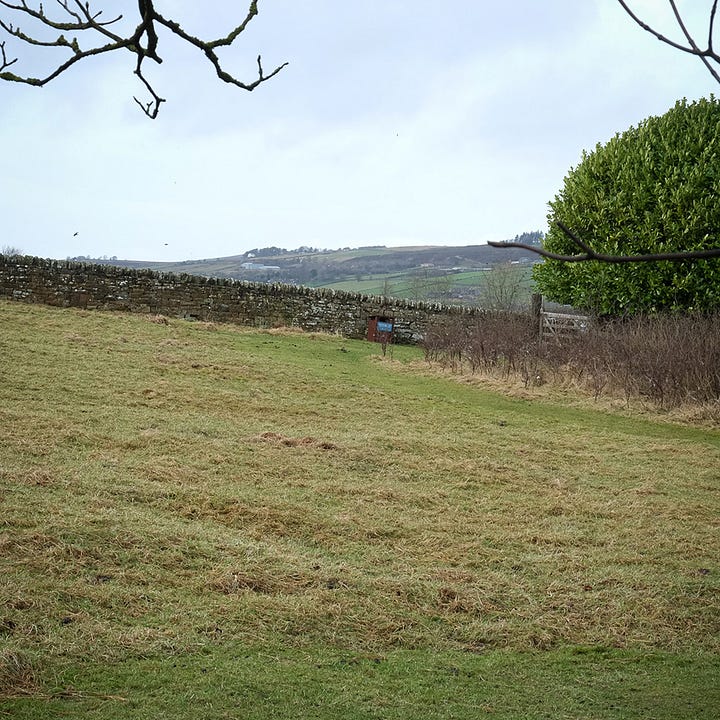
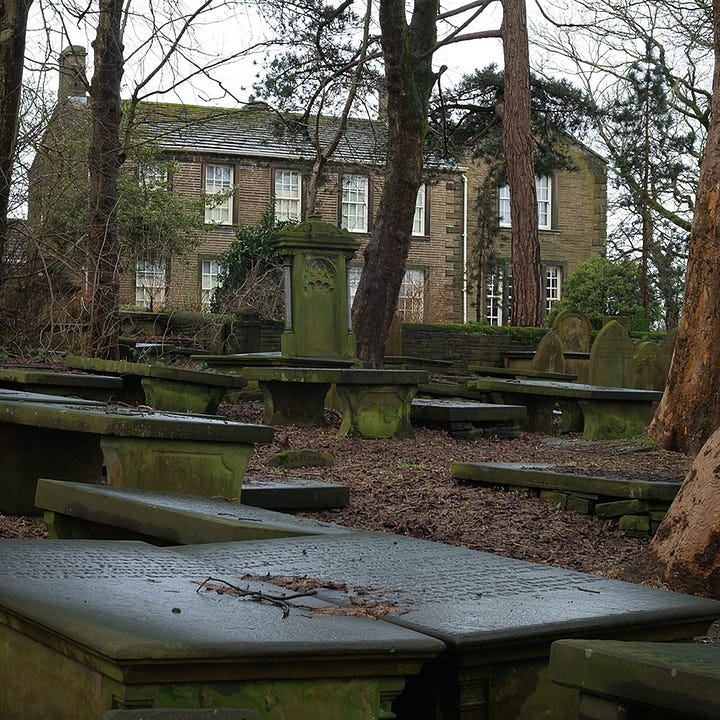
The village today is pretty much as the Brontës would have seen it in the 1820s-50s. The post office, where their manuscripts were posted to publishers in London, the pharmacy where Branwell bought laudanum (an opium based painkiller) and the Black Bull Inn, a favourite watering hole and now a smart guest house, pub and restaurant.
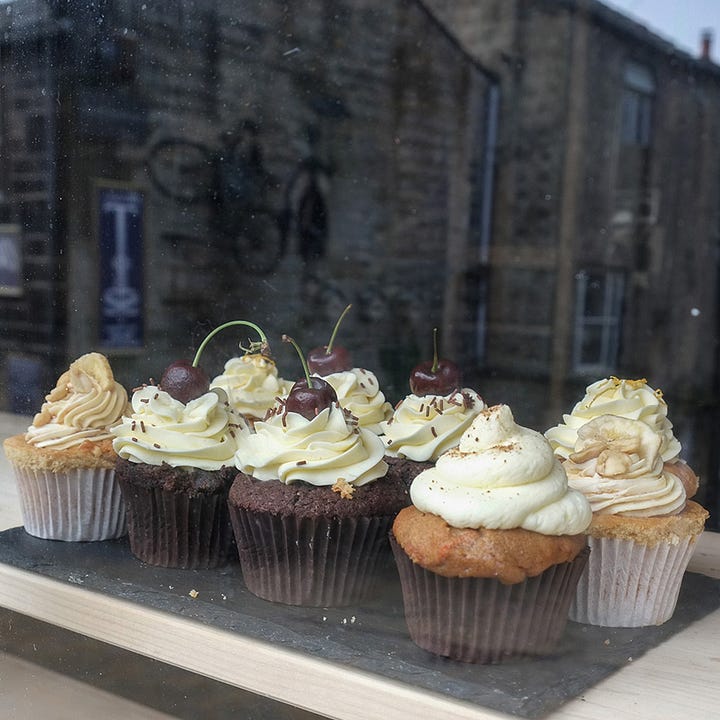
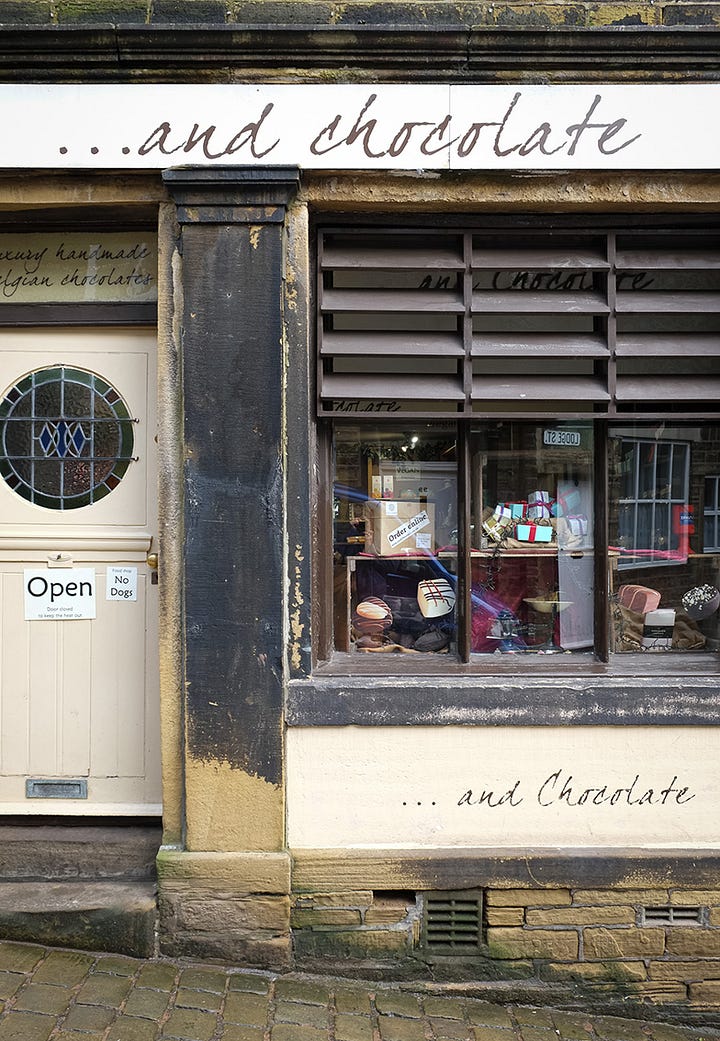
The Cabinet of Curiosity occupies the site of the old chemists and in keeping with early Victorian style is fitted with antique apothecary shop fittings and collections of vintage pharmacy bottles. Attractive displays of handmade candles, soaps and perfumes lead to a bookshop at the back of the store.
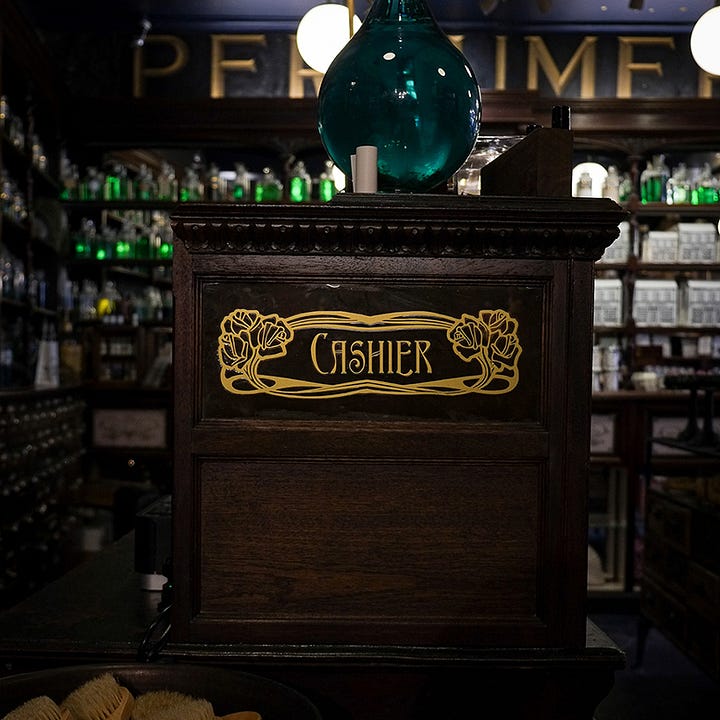
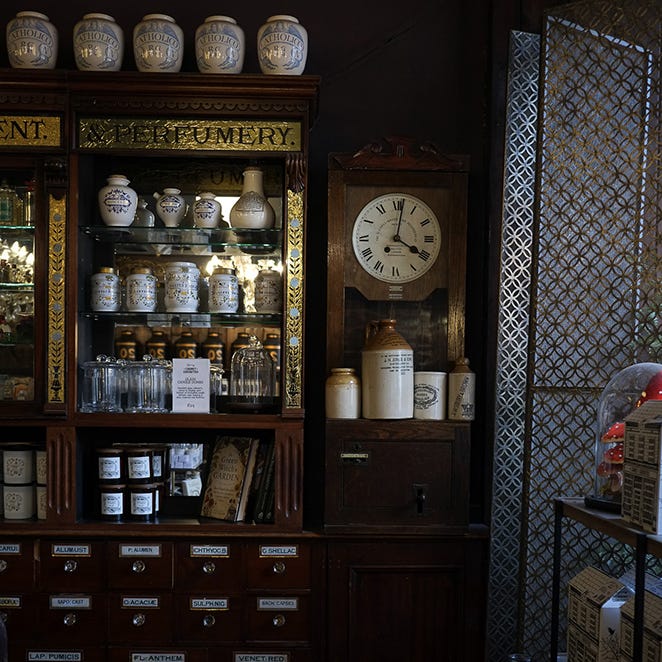
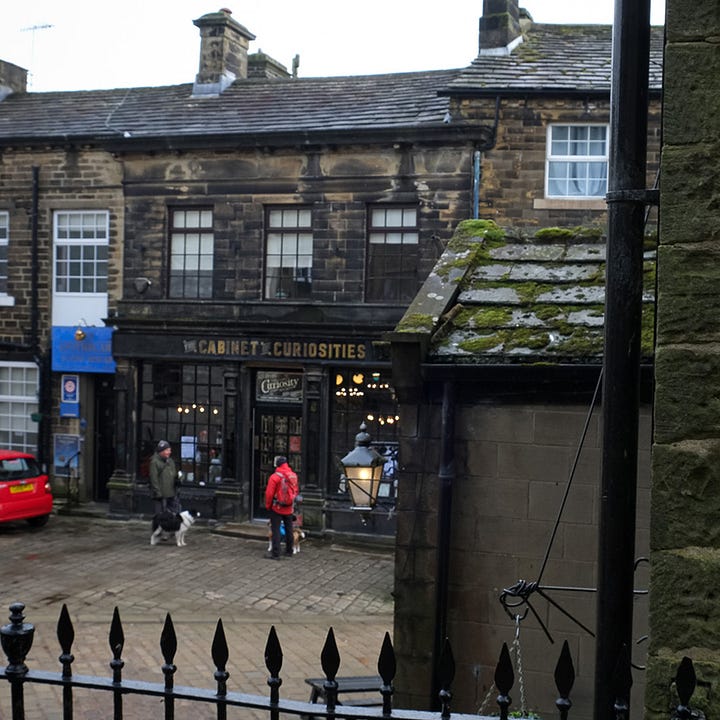
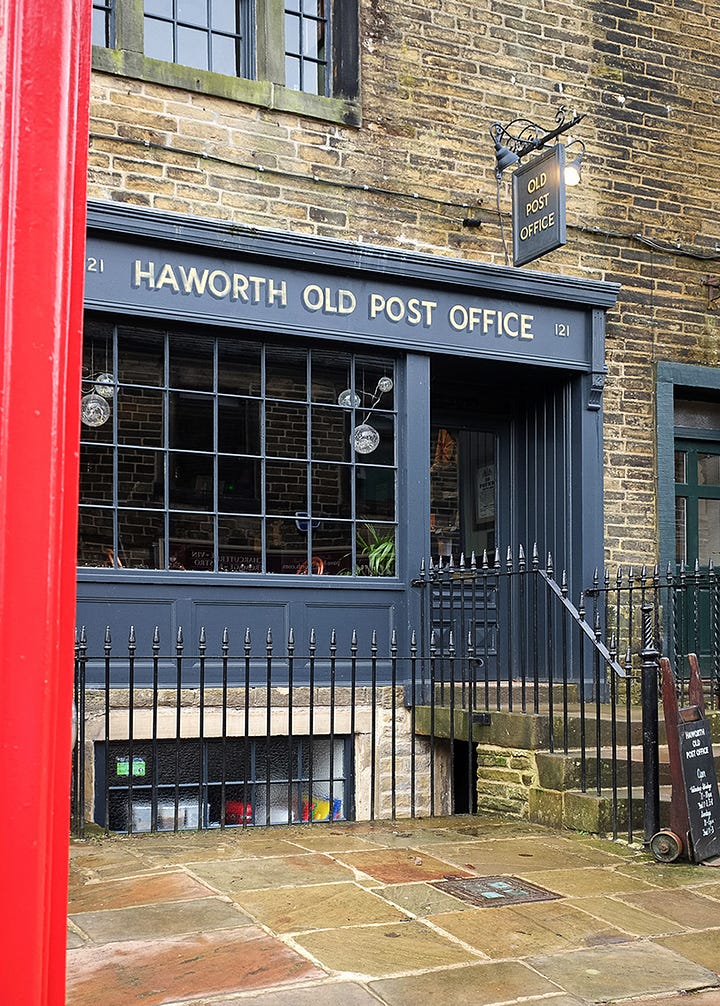
I stopped to browse in secondhand bookshops, gift shops and Mrs Beighton’s Sweet Shop and had a delicious home cooked lunch at The Fleece halfway up Main Street. Tempted into Villette bakery (named after Charlotte Bronte’s novel of the same name) I bought gingerbread and traditional Yorkshire curd tart - similar to a baked cheesecake with a creamy curd cheese filling, currants and nutmeg encased in all-butter pastry.
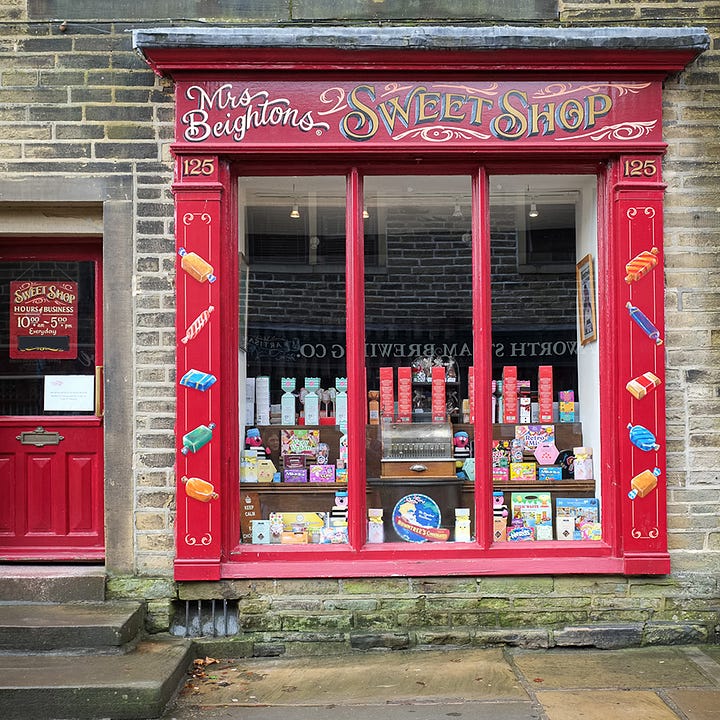
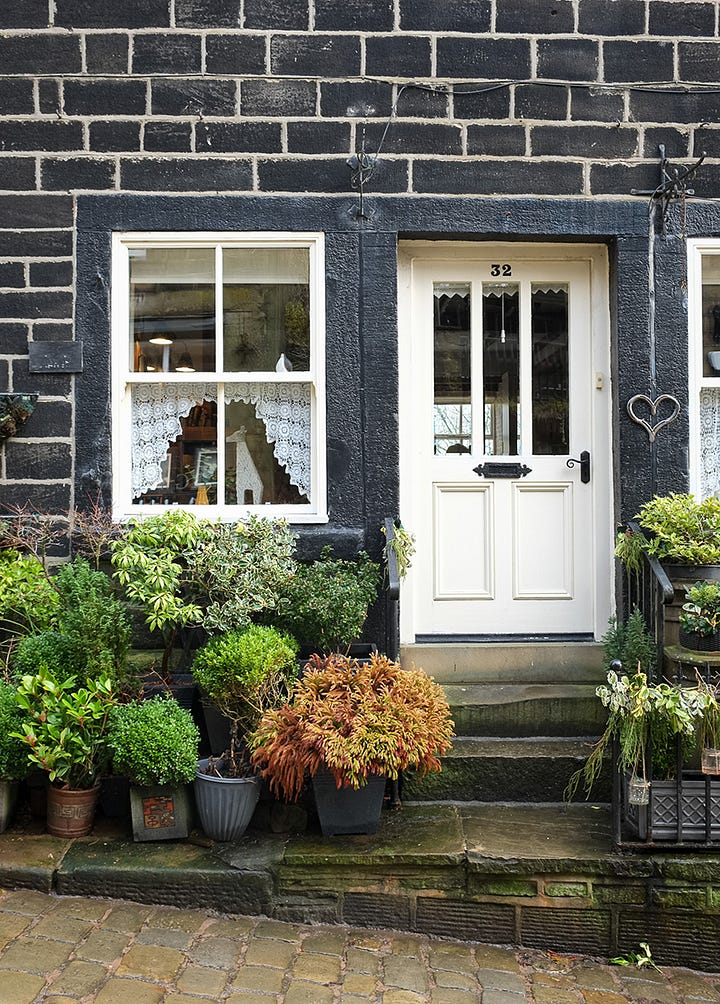
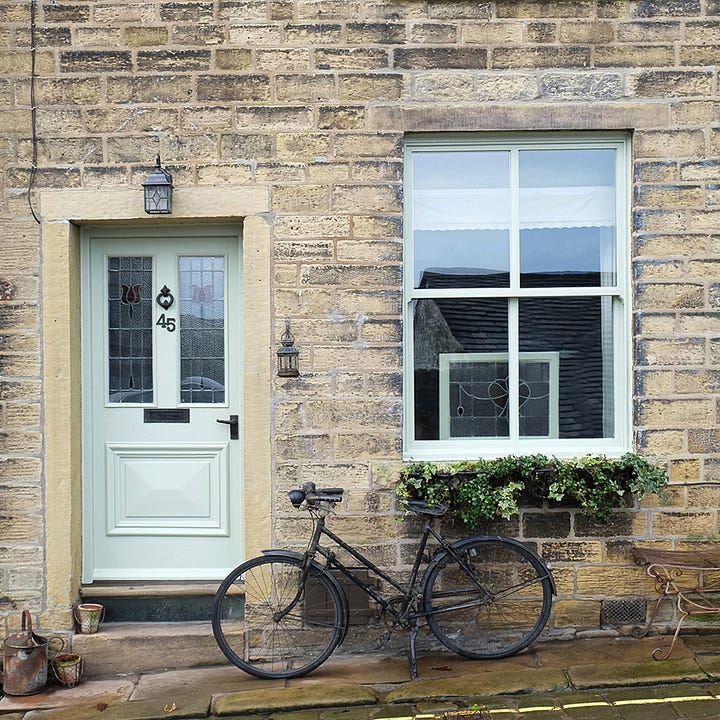
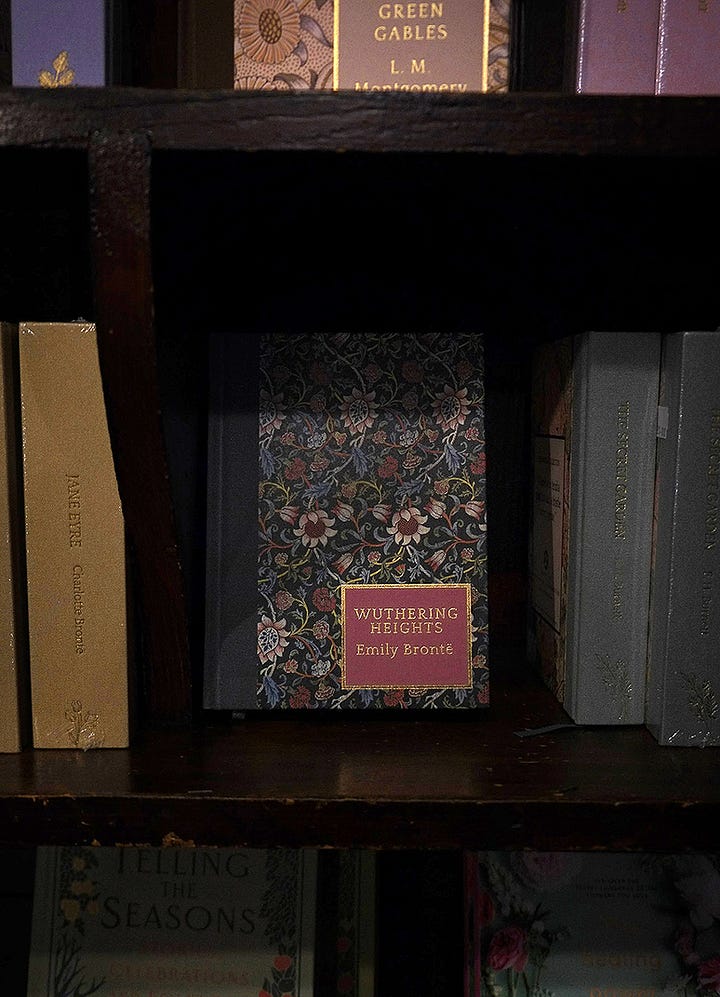
One of the loveliest shops belongs to Lesley, a florist and owner of The Store - a shop filled vintage inspired items, sustainably sourced clothing and hand-tied fresh flowers.
Walking back down the cobbled hill, as the winter light faded, it wasn’t so difficult to imagine the Brontë sisters running errands to the bakery, the hardware store for candles or the stationery shop for nibs, ink and paper. And although the books penned by Anne, Charlotte and Emily attracted immediate attention in their lifetimes I wonder if they ever imagined the far-reaching legacy that their passionate stories would leave behind.
If you’re new here, thank you for reading Love Vintage etc. a monthly newsletter with additional posts on design, vintage, travel, interiors and anything else I think you’ll enjoy. I value and appreciate every one of you being here - my paid and free subscribers - and I want you to feel excited about what you discover. I share a lot for free and these posts take a great deal of time and research and include special photography so I would love you to consider becoming a paid subscriber. If you subscribe for free then why not consider upgrading from just £3 a month for an annual subscription. I would love you to join my community where you’ll get to go behind the paywall, read special interviews and content, access archive posts and receive a welcome gift. Thank you so much for your support, Michelle x
The Design Interview: Corin Mellor
It seems befitting that Pride, a cutlery range by David Mellor, was designed in the early 1950s as post-war Britain worked to restore industry and confidence. The Festival of Britain, a five month expo with its epicentre on London’s South Bank, was created to promote the very best of mid-century industry, arts, science and design and Mellor would most likely have been inspired by the celebratory new mood and spirit of the festival.
And it didn’t stop at cutlery. David Mellor went on to create the British traffic light system, red square post box and Abacus bus shelter to name just a few twentieth-century design icons. But it was with homewares that he established his first London shop in 1969.
I met with Corin, David’s son, at their Chelsea shop just as it was getting ready for Christmas. And although it was a busy time, with boxes of fresh stock to unpack, Corin was more than happy to give me a tour of the shop floor.
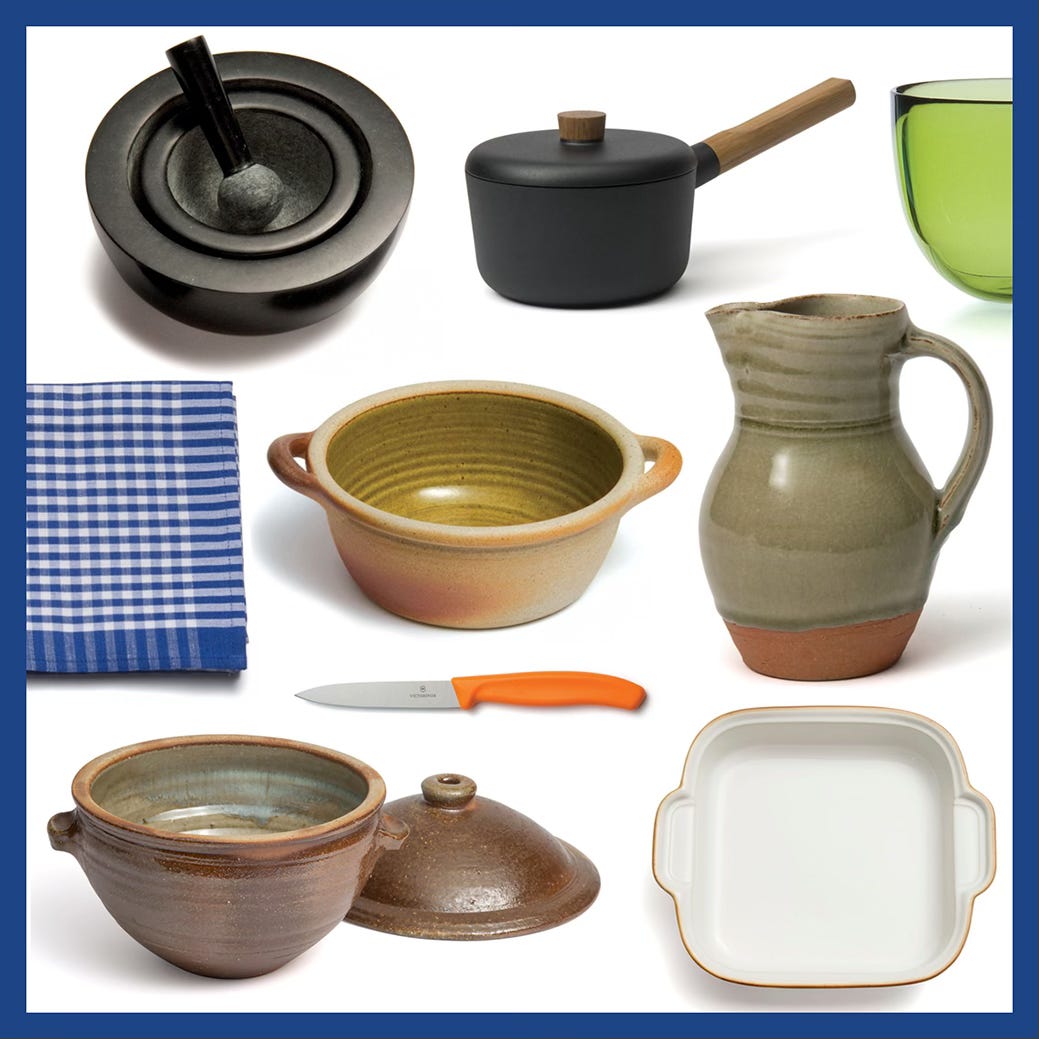
We started with the celebrated cutlery collection, perhaps their best-loved product and the Chelsea range, Corin’s first solo cutlery range designed 14 years ago. The knife blades are high carbon stainless steel, providing a finer cutting edge than average stainless steel and rounded hollow handles give the design balance. “It looks simple but it has to feel good,” says Corin, of the snug hold and modern, fluid shape.
The Pavillion Road shop stocks a covetable selection of tableware, glassware and ceramics as well as kitchen knives and cookware. Personal favourites, shown above, include Leach baking dishes, Corin’s black granite pestle & mortar and a hand thrown green glaze jug by Nick Membery .
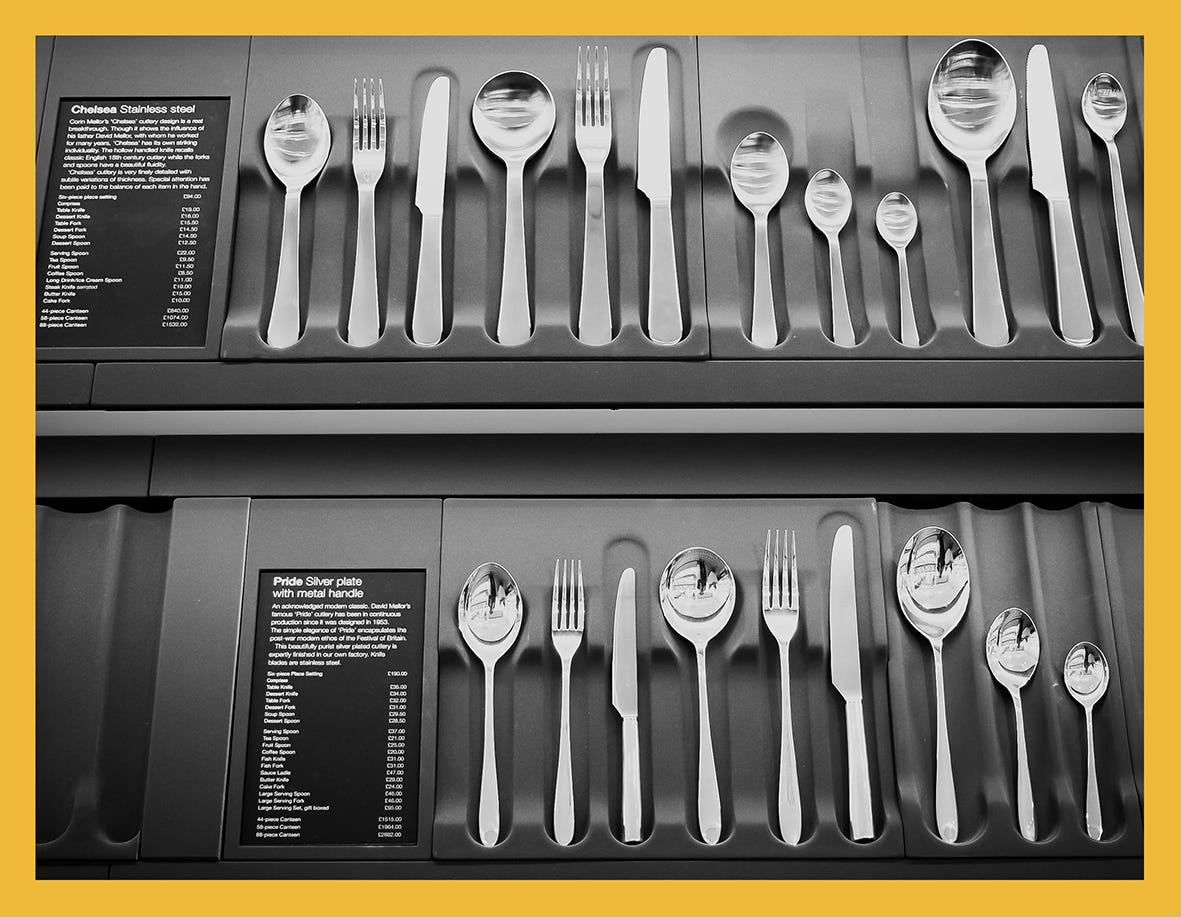
Corin showed me glassware made to his specifications in Europe - each piece mouth blown into a wooden mould, unique in form and based on a mid-20th century Scandinavian goblet. Gleaming coloured glass bowls, also designed in-house and produced in collaboration with small independent factories, are displayed alongside wooden bowls by Liam O’Neill, one of Ireland’s leading woodturners.
Each product has been designed within the company or selected for its artistry and timeless appeal. Swiss tea towels, beautifully made in gingham linen, willow garden trugs, handmade in East Sussex and bread boards crafted in ash. “A good design should stand the test of time,” says Corin, “I’m not into fashions and trends.”
In Ottolenghi’s café across the street our conversation turned to the David Mellor Design Museum and factory at Hathersage, near Sheffield, where Corin was born. Cutlery is made in the purpose built factory - a unique circular building, originally an Edwardian gasworks, set within the outstanding natural beauty of the Peak National Park. For any fans of mid-century design and manufacture the museum tour (from March onwards) gives an insight into the architecture of the Round Building, the history of the company and its influence on British design.
The humble cafetière
Finishing our coffee I reminded Corin of the sleek stainless steel cafetières I’d spotted in the shop; another favourite for my wish list. “Ah, yes,” he said, “Bettys tearoom asked for them in silver plate.” How fitting that a slice of Sheffield heritage is served with coffee and homemade cake at the famous Yorkshire tearooms, across the foothills of the Pennines, in Harrogate.
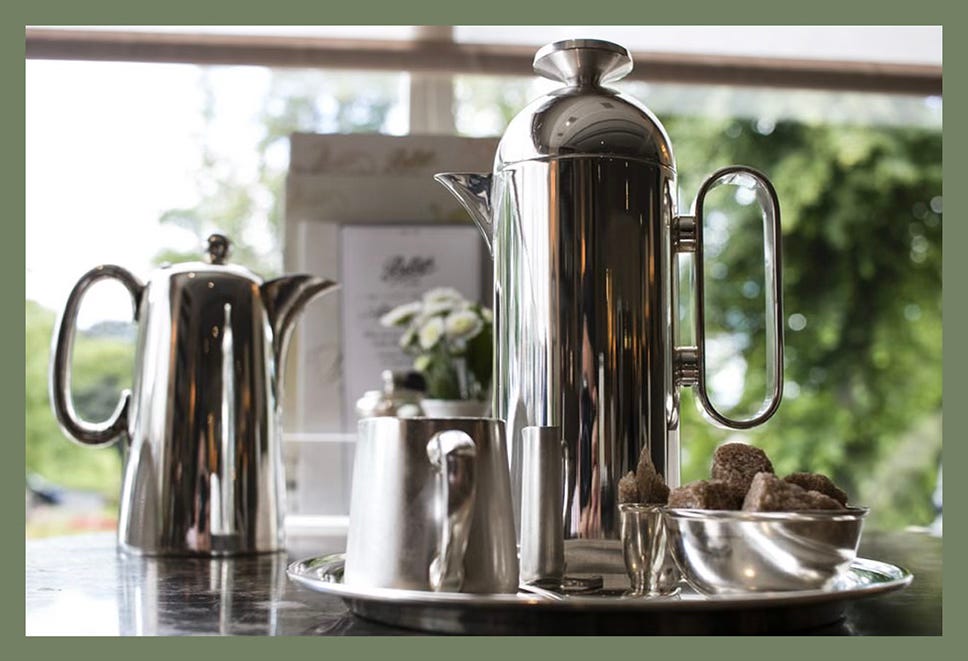
Fresh Vintage Stock
February’s new stock includes a striking oil painting of a view of the River Thames towards Richmond Bridge, below. It measures 33.5cm x 28.5cm and is the perfect painting for anyone with connections to west London or lovers of river scenes. £215.00
For all flower fans the lovely “Cornflowers, Irises, daffodils & Peonies” oil on canvas painting is full of spring colour and measures 55cm x 46cm. £198.00
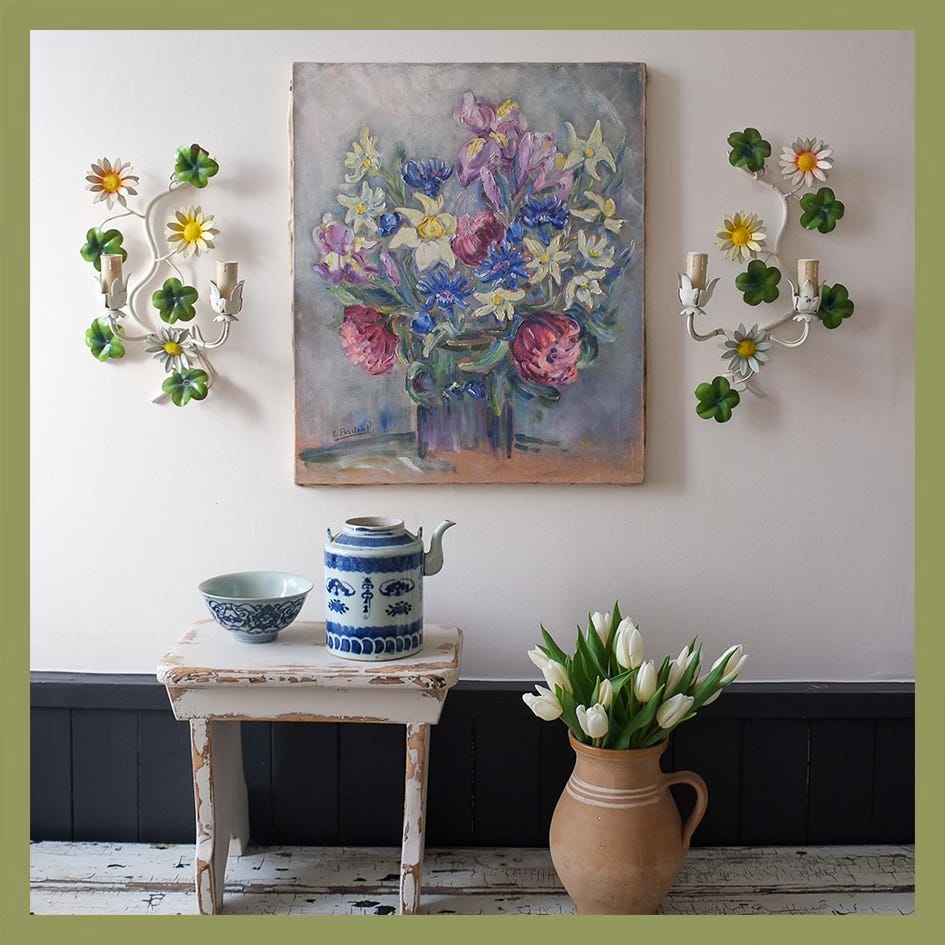
“Parisian Flower Sconces” is a stunning pair of French mid-century metal wall lights. They’d be perfect used as candleholders or re-wired to make the prettiest bedside lights. 55cm tall x 46cm wide. £240.
As subscribers to Love Vintage Etc. you get to see fresh stock before it becomes available anywhere else. You can message me or add a comment below if anything catches your eye or visit the webshop on Saturday at 3pm (UK time).
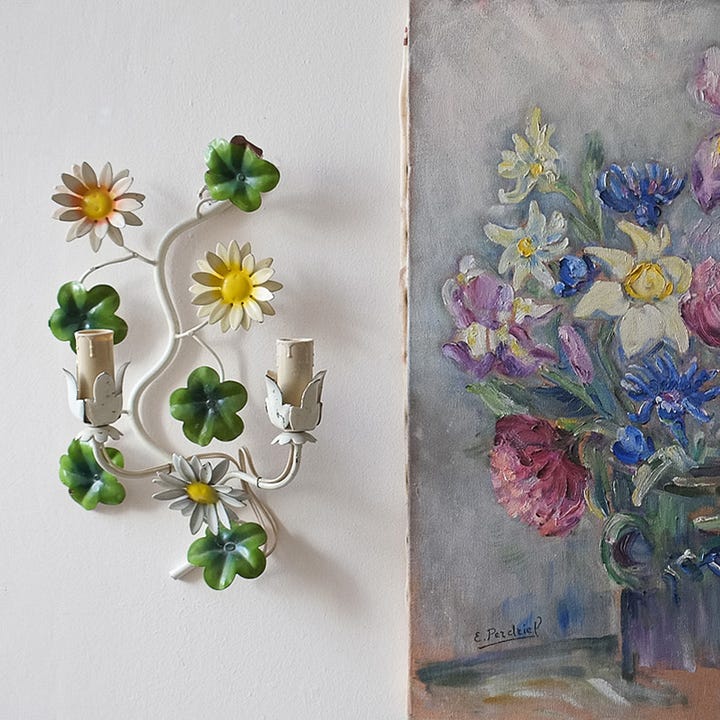
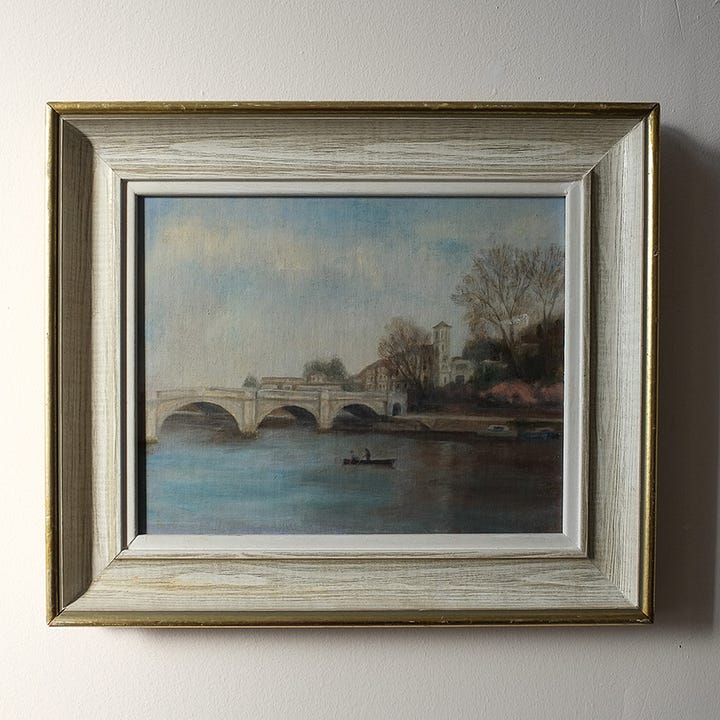
At the Museum
As the vintage buyer for the Sir John Soane Museum I’m always on the lookout for items dating from the Regency period up to mid-Victorian. Ceramics, glassware, small paintings and silverware often feature in the selections. Since Sir John Soane’s Georgian Drawing Office recently opened to the public architectural accessories such as pre-loved leather bound tape measures and wooden spirit levels have been particularly popular. This French 1920s tray (below), designed in the Napoleonic style, has a ceramic base beautifully decorated with flowers and a robin and set in ebonised wood, with turned handles. It will be available directly from the Soane Museum shop, Lincoln’s Inn Fields, London.
The Sunday vintage pop-up shop continues on 9 February at the lovely SolidFloor showroom in Shoreditch. There’s fresh vintage stock each week and I’m there from 10am-2pm to coincide with the famous Columbia Road Flower Market. Find us at 7a Ezra Street, London E2.
Thank you as always for reading, it’s great to see you here and many thanks to all new subscribers. Until next time, have wonderful start to February, lots of love
PS If you’ve enjoyed this post please ‘like’ by clicking on the little heart or restack symbol as it massively helps with visibility and brings the newsletter to a wider audience.





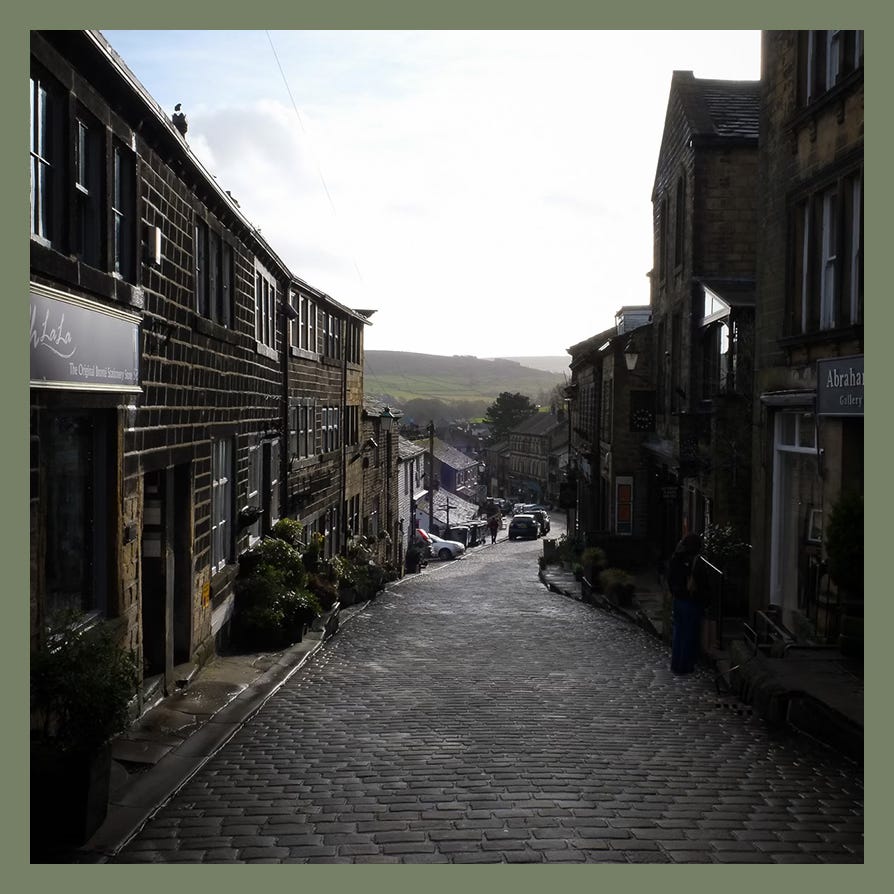
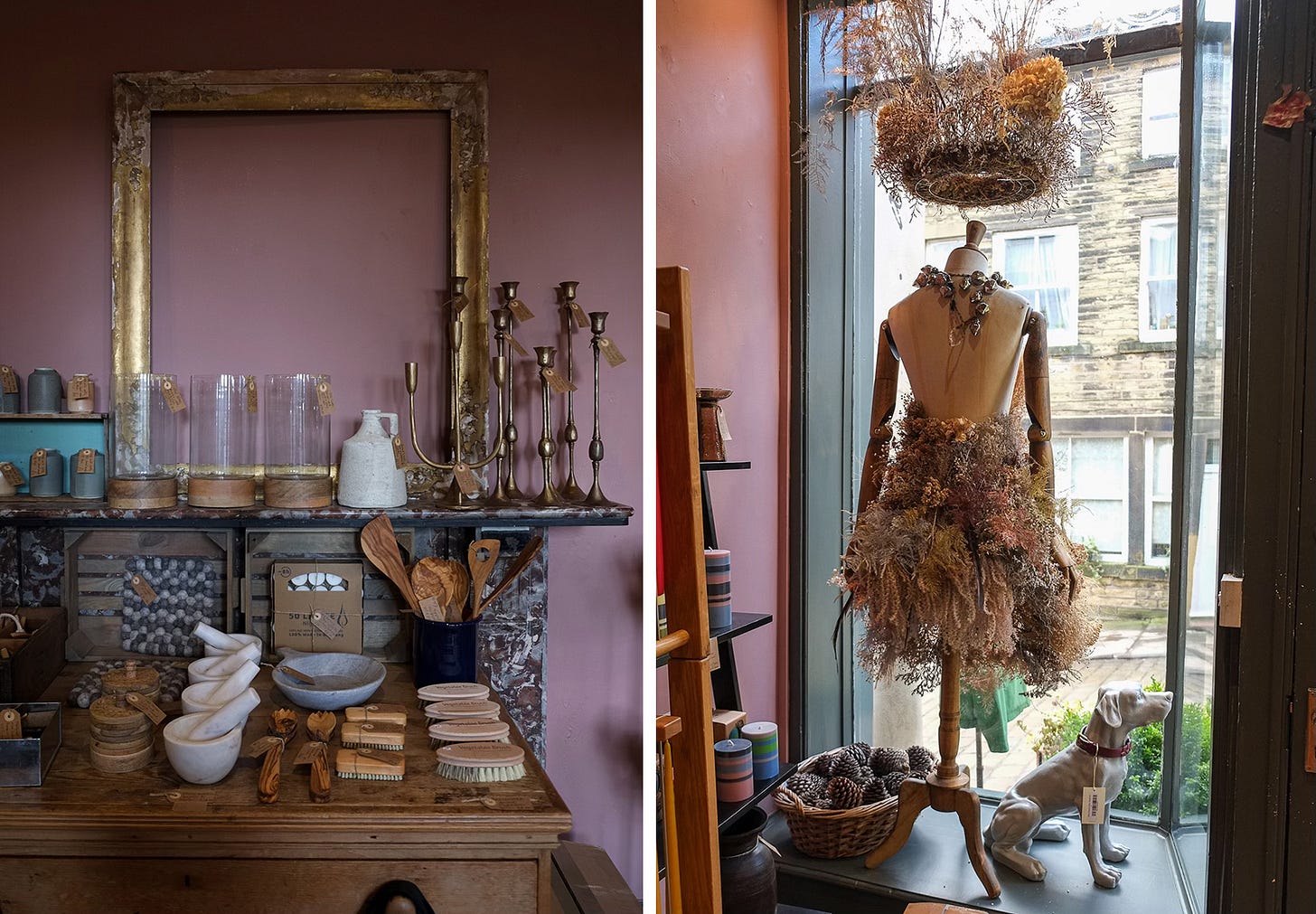

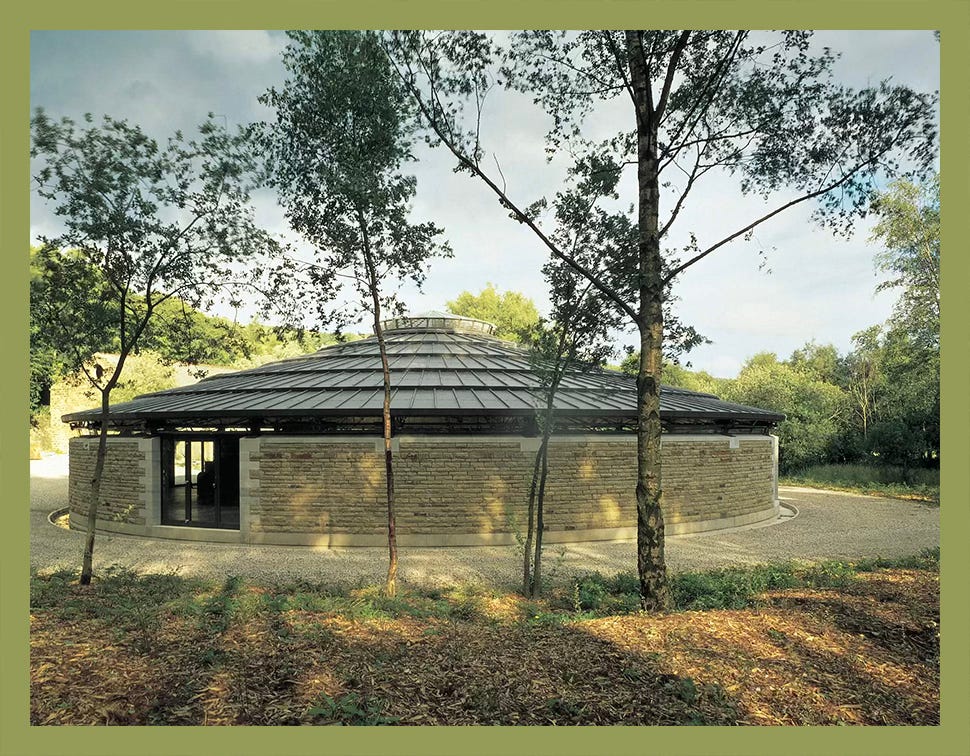
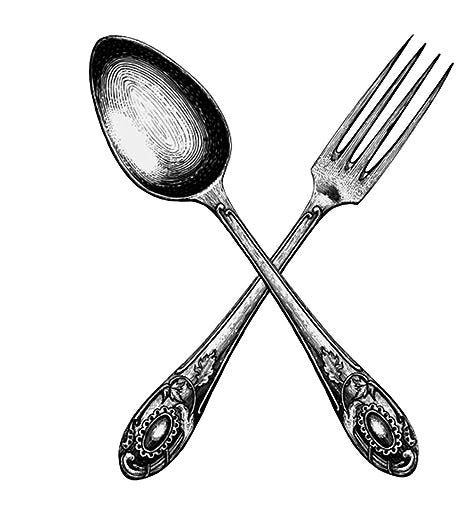
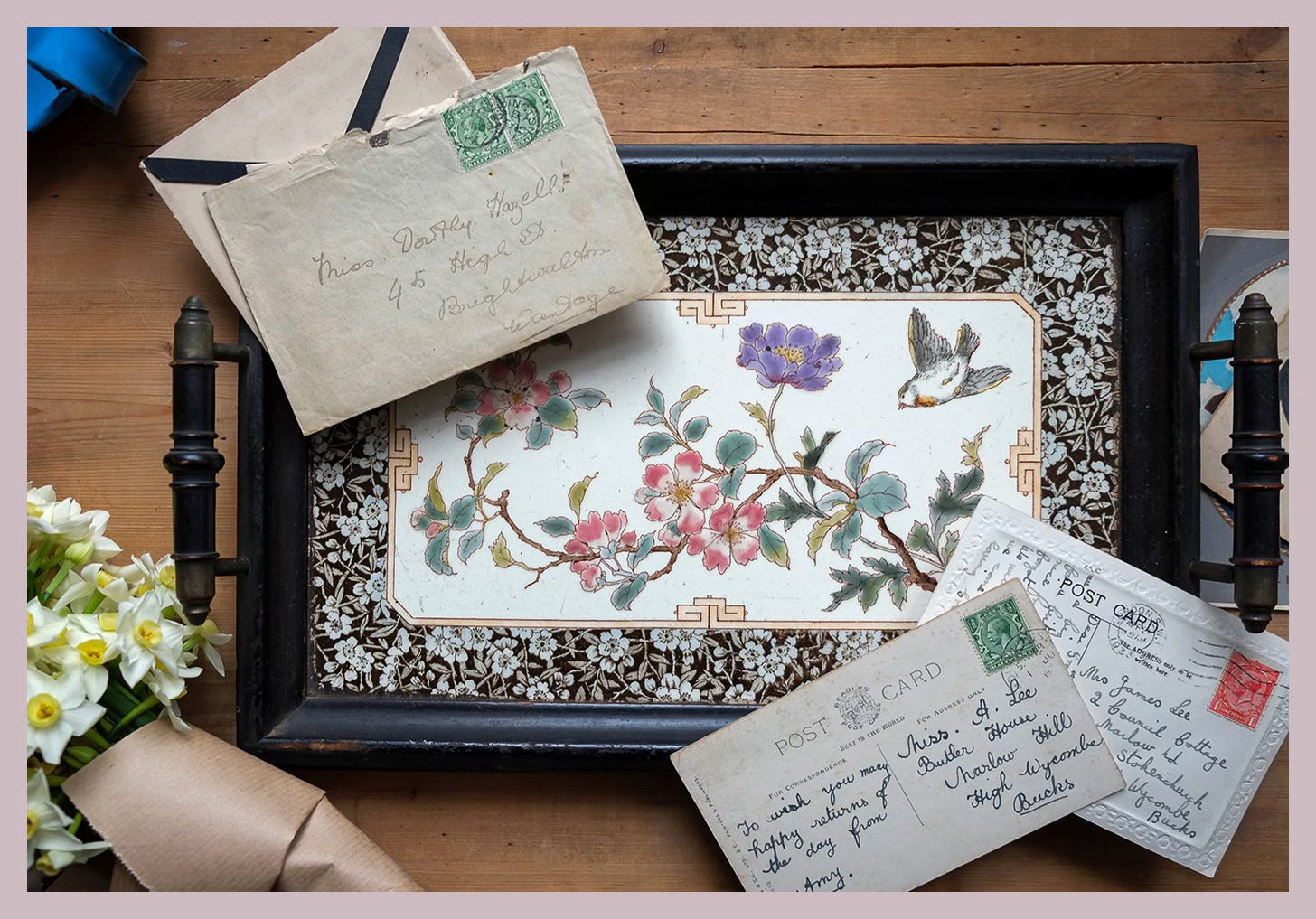

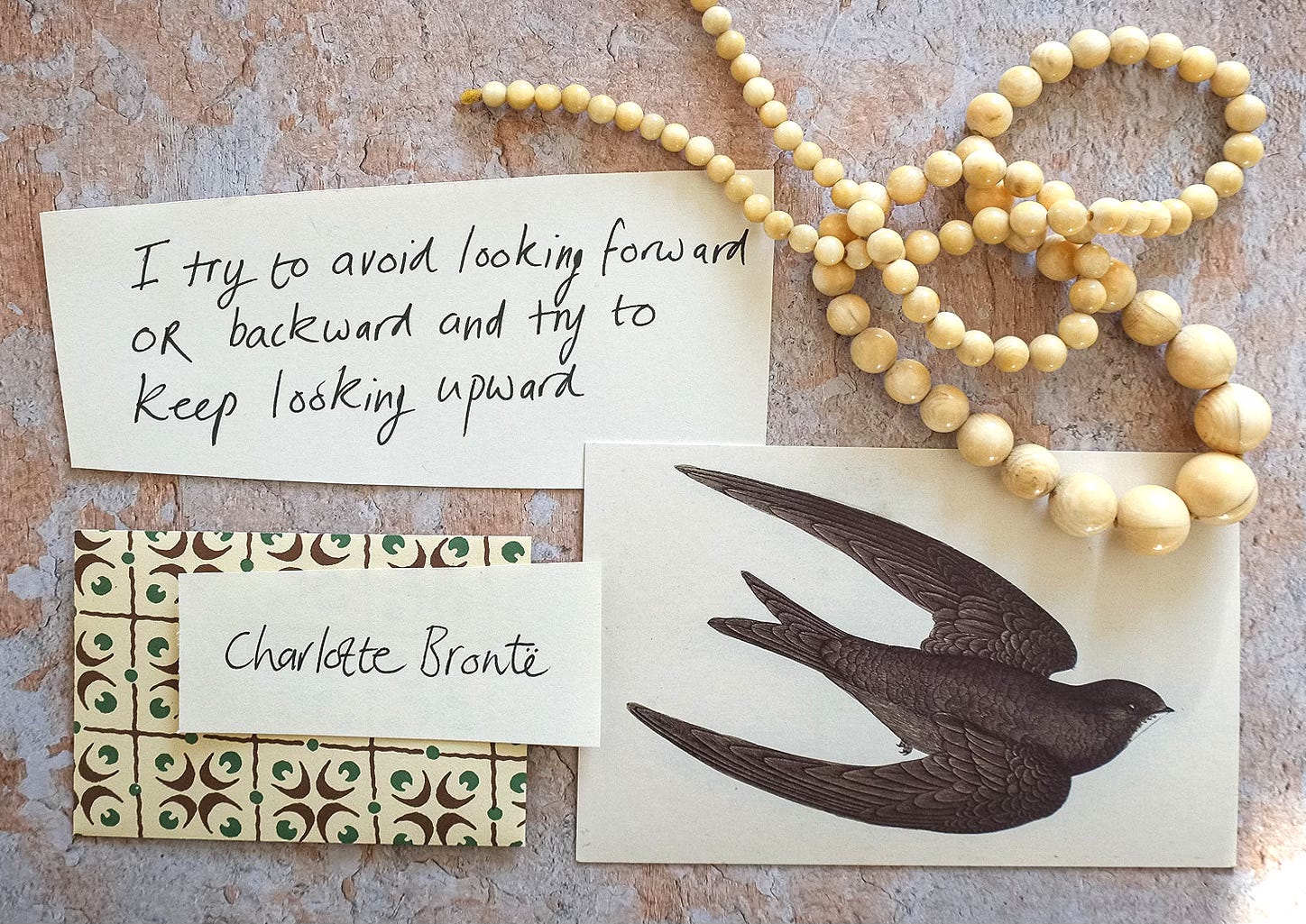
I fell in love with the Mellor coffee pot when visiting the studio - it is a joy to use! x
It was one of my favourite Mellor products too, Julia ☕️ x